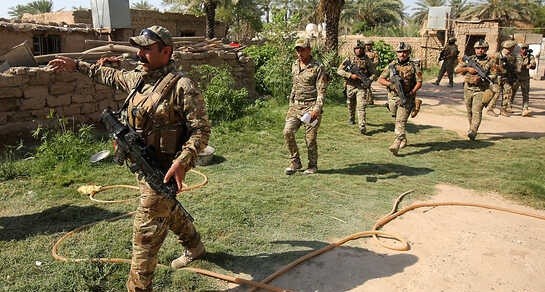
Islamic State terrorists deadlier than COVID-19 virus in some parts of Iraq
With the spread of the novel coronavirus in Iraq and a recent spike in the number of registered cases, Iraqis have wondered how to compare the deadly new threat with a more familiar foe: Islamic State.
Many Iraqis have in recent weeks found the jihadists to be more lethal than COVID-19, particularly in northern provinces disputed between the central government in Baghdad and the Kurdistan Regional Government (KRG) in Irbil, according to local government officials.
Iraq announced its first coronavirus case in late February. The country’s health ministry has since reported 13 deaths from the virus in the disputed provinces of Kirkuk, Diyala, Saladin and Nineveh.
The reported killing of civilians and security forces by IS in those provinces, however, has reached at least 50 people.
“Certainty, Daesh is stronger here” said Husham Alhashimi, a Baghdad-based terrorism expert with the Center for Global Policy, using an Arabic acronym for IS.
“In some of these areas, there are no security forces, whether from the federal government or the peshmerga,” he told VOA by phone from Iraq.
The peshmerga is the military force of the Kurdistan Regional Government.
To prevent the further spread of the coronavirus, Iraqi authorities have imposed a strict lockdown, banning all “nonessential” traffic, public gatherings and businesses nationwide.
The restrictions at first appeared to yield results. That changed in May when the country saw a major spike in the days following the Ramadan Eid festival, when the government relaxed its curfew.
As of Friday, the Iraqi health ministry has confirmed 9,846 cases, with 4,573 recovered and 258 dead. The capital, Baghdad, remains the epicenter of the pandemic with more than half of the country’s cases.
While the rest of the country struggles to contain the new wave of the contagious virus, the disputed territories seem to be least prone to it. That is, according to some experts, mainly due to a stiffer lockdown and increased IS activity, limiting population movement in the area.
“Sometimes at around 2 pm, [security forces] facilitate some movement here and there for people to go to the bazaar and return home, but after that they will impose a complete curfew, especially at night,” said Azad Shukr, a journalist based in Kirkuk.
The disputed territories cover a large swath of ethnically and religiously diverse territory in the four provinces and have long been considered a hotbed for extremism. They are oil-rich areas claimed by both Baghdad and the KRG.
In 2014, when IS took control of Mosul in a major assault, the peshmerga seized the region after Iraqi army units abandoned their positions.
The Kurdish military was forced out in October 2017, when the Iraqi army and Iran-backed Shiite militia stormed in following the Kurdish independence referendum. The Iraqi army and the Shiite Popular Mobilization Forces (PMF) are now in control of urban areas, but much of the rural terrain along the Hamrin mountain ridge remains a no man’s land.
Local intelligence sources report as many as 3,000 IS fighters could be using the area as a stronghold where they hide, train and plan attacks.
With Iraq’s attention largely switched to COVID-19, experts warn that IS faces less pressure in the disputed lands and is ready to reorganize its sleeper cells.
“The key reason for the group’s ability to operate in the disputed areas is simply the existence of gaps,” said Hassan Hassan, an expert on the group.
IS, he maintained, “thrives in places where it doesn’t have one enemy or a set of enemies that coordinate well with each other.”
Source: VOA News





